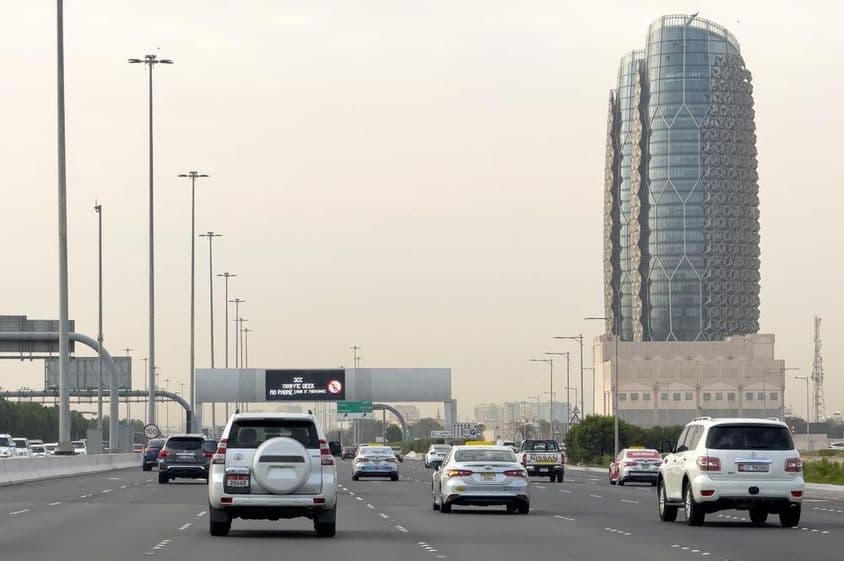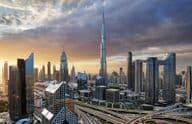New Traffic Intersection Unveiled in Al Ain

New Traffic Intersection Opens in Al Ain City - Along with Closures
Abu Dhabi mobility developments enter a new phase.
From August 23, 2025, a new signalized intersection will open in Al Ain city, part of the Abu Dhabi Emirate, along Nahyan The First Street. The development was officially announced by Abu Dhabi Mobility, who also shared the update on social media. The purpose of the investment is to enhance traffic safety and alleviate congestion during the morning and evening peak hours on one of the city's key routes.
Strategic location, increasing traffic
Nahyan The First Street has long been a major artery for traffic going into and out of Al Ain city. The new intersection will play a particularly important role in the transportation network as it connects several residential and commercial areas. The design of the signalized junction included a focus on installing smart traffic lights that can optimize travel time for passing vehicles based on real-time traffic monitoring.
Local residents and commuters have long awaited the implementation of this project, as the old junction frequently caused disruptions, especially during weekday mornings and afternoons when school and office traffic simultaneously burdened the network.
Permanent closure of Al Hisn Street
While a new intersection is being inaugurated, another important route – Al Hisn Street – will be permanently closed. Abu Dhabi Mobility announced that from August 23, the section of Al Hisn Street located between Zayed The First Street and Hamdan Bin Mohammed Street will be closed in both directions.
The reason for the closure is the low utilization of this section and the redesign of surrounding areas as part of a complex urban development project. Authorities indicated that traffic will be redirected to alternative routes, and adequate information will be provided to the affected commuters to minimize transitional disruptions.
Resource allocation and mobility strategy
The creation of the new traffic intersection and the rearrangement of road sections are part of Abu Dhabi's long-term mobility strategy. The goal is to establish a sustainable, safe, and efficient transportation infrastructure throughout the emirate, including the rapidly developing city of Al Ain.
In recent years, Abu Dhabi has allocated significant resources to modernizing its road network. The latest transportation technologies are being applied, such as sensor-controlled traffic management, traffic density monitoring camera systems, and green wave optimization on main routes.
What does this mean for residents and commuters?
The opening of the new intersection will undoubtedly improve the transportation experience, reduce waiting times, and increase route safety. However, temporary inconveniences are also expected due to the closures, especially for those who commute daily in the affected areas.
Abu Dhabi Mobility suggests the following for commuters:
Use official transportation applications for real-time traffic information.
Start earlier than usual, especially during the first few days.
Pay attention to roadside signs and detours that help with navigation.
Respect all temporary signs and instructions to ensure smooth operations of the works.
Looking ahead: Al Ain's transportation vision
The current developments are not isolated steps. The transportation developments affecting Al Ain city will continue in the coming years. There are plans for further road expansions, construction of new roundabouts, and extension of smart traffic management systems to suburban areas.
Al Ain, which is the second-largest city in Abu Dhabi Emirate, receives particularly significant attention in terms of infrastructure modernization. The city's population and economic activity are continuously growing, making it essential for the road network to keep up with this dynamism.
Summary
The new intersection inaugurated on August 23 in Al Ain is an important step towards safer and more efficient transportation. Simultaneously, the permanent closure of Al Hisn Street also indicates that Abu Dhabi's leadership is not hesitant to structurally alter city transportation if it serves overall development.
Such investments pay off in the long run: not only does transportation become smoother, but the city's livability, economic attractiveness, and environmental sustainability also increase. Thus, Al Ain is on the right path to becoming a model project of Abu Dhabi's transportation policy objectives.
(The article source: Announcement from Abu Dhabi authorities.)
If you find any errors on this page, please let us know via email.


